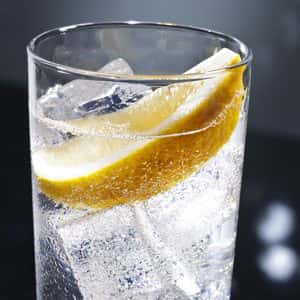
When a common remedy becomes unavailable, people often become creative. They find new ways to address the problem. That is what many folks have needed to do once the FDA took quinine for leg cramps off the table.
Tonic Water Instead of Quinine Pills:
Q. I get leg cramps at night. I used to have a prescription for quinine which would immediately end the cramps. Doctors are no longer allowed to prescribe quinine for cramps, so I drink a few mouthfuls of tonic water instead. The quinine in tonic works just as well as the prescription used to. I will try your mustard suggestion next time.
A. At this time, the prescription medicine quinine sulfate is to be used exclusively for treating uncomplicated malaria. In the mid 1990s, the FDA banned the sale of quinine over the counter. Some people are extremely sensitive to this compound. Small amounts may cause heart rhythm abnormalities, blood disorders or kidney injury.
Quinine in Tonic Water:
As you note, however, tonic water contains quinine. That’s what gives tonic its distinctive bitter flavor. Quinine activates transient receptor potential (TRP) channels that also react to capsaicin from chili peppers and mustard oil (Journal of Neuroscience, Feb. 27, 2019).
We suspect that is how these strong flavors reverse muscle cramps quickly. You can learn more about this and other approaches to nighttime leg pain in our eGuide to Favorite Home Remedies.
Looking for Quinine for Leg Cramps:
Q. I keep having severe leg cramps. I am old enough to remember when my doctor prescribed quinine for them. Now I can’t find quinine capsules anywhere. A pharmacist suggested I check with you. Is there any way you can help me find quinine for leg cramps? Is there anything similar?
A. Quinine is no longer available over the counter or by prescription to treat leg cramps. The FDA determined that the risk of severe reactions was too high for the modest benefit of alleviating leg cramps. Doctors can prescribe quinine (Qualaquin), but only to treat malaria.
How to Find Quinine:
There are some homeopathic cramp remedies that contain minuscule amounts of quinine. The FDA does not regulate these as drugs, but rather as dietary supplements. Some people report that they get relief, but we are not aware of studies that substantiate their effectiveness.
You can also get quinine in tonic water. Some people find that drinking a glass of tonic at bedtime can ward off nighttime leg cramps.
Other Remedies for Leg Cramps:
Over the years, we have collected quite a number of home remedies for sudden painful muscle cramps. Often these are leg cramps, but occasionally muscles in the hands or arms cramp as well. One favorite remedy that coaches love is pickle juice. A few sips of pickle juice can chase a cramp away. But what about pickle relish? Does it work as well?
Pickle Relish for Sudden Leg Cramps:
Q. I appreciate the suggestion to use pickle juice for leg cramps. I don’t usually keep pickles around but I always have dill relish in the fridge. When I feel a cramp coming on, I just take two tablespoons of pickle relish and it goes away in seconds!
Why Does Relish Work?
A. Pickle relish should work just as well as pickle juice for stopping a nighttime muscle cramp. Presumably, the sharp taste of the vinegar in the relish is largely responsible for triggering TRP (transient receptor potential) channels in nerves to reverse the muscle contraction.
You can learn more about how TRP channel activation eases muscle cramps from this interview with Bruce Bean, PhD. He is a neurobiologist who suffered debilitating arm muscle cramps while paddling a kayak in the Atlantic. After that experience, he spent many years investigating the physiology of muscle cramps. His explanation of TRP channels and their role is fascinating.
Learn More:
You can find several other remedies for leg cramps in our Guide to Leg Pain. On the other hand, you can find out about other popular home remedies in our book, The People’s Pharmacy Quick & Handy Home Remedies. We write about reader favorites for many common problems, from allergies and nail fungus to heartburn and high cholesterol.
Citations
- Li J & Lemon CH, "Mouse parabrachial neurons signal a relationship between bitter taste and nociceptive stimuli." Journal of Neuroscience, Feb. 27, 2019. DOI: 10.1523/JNEUROSCI.2000-18.2018

